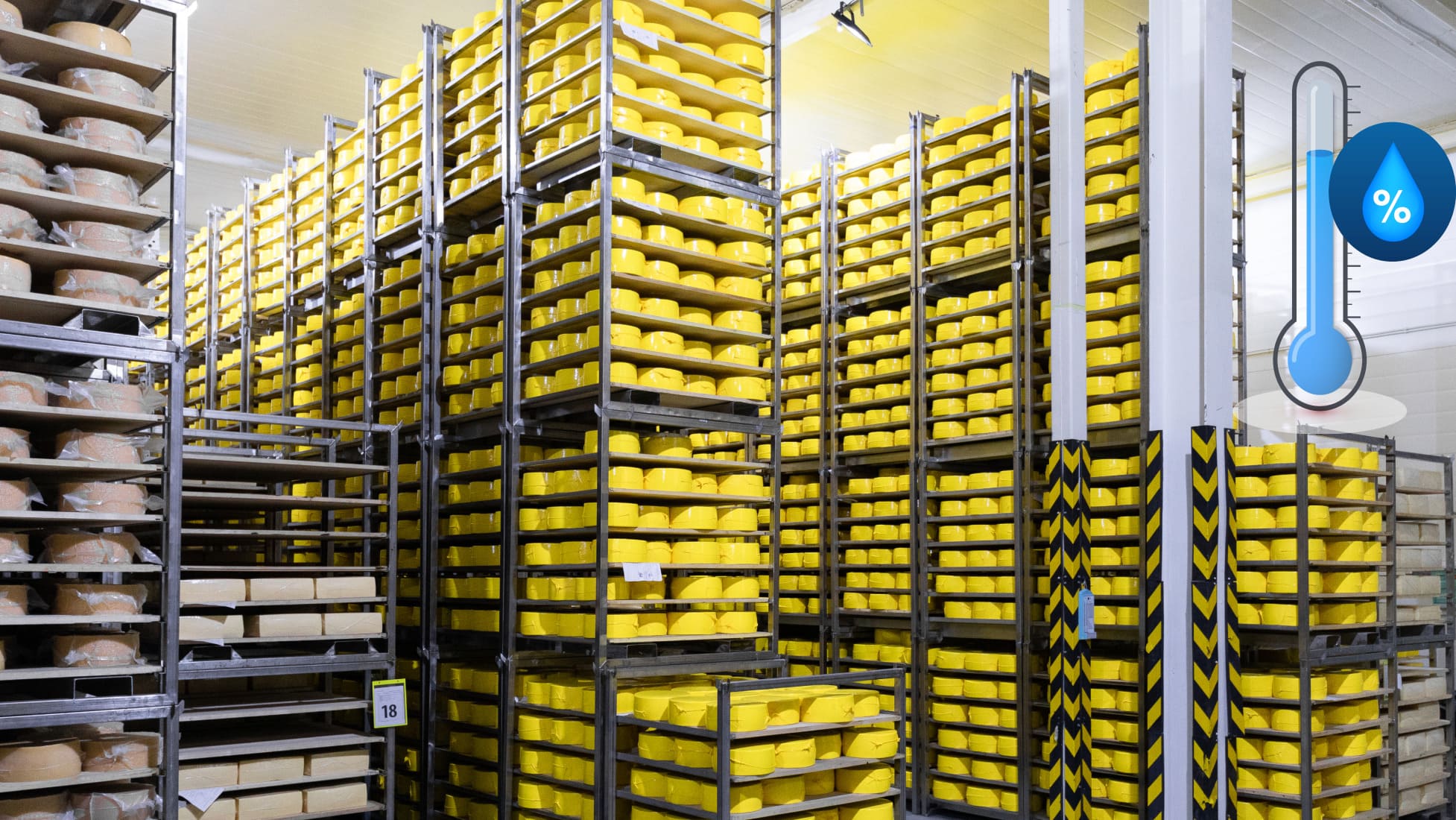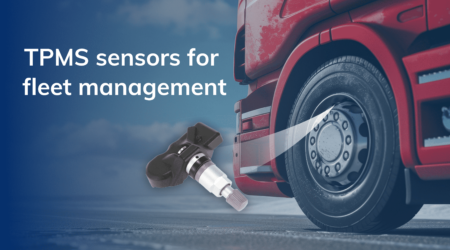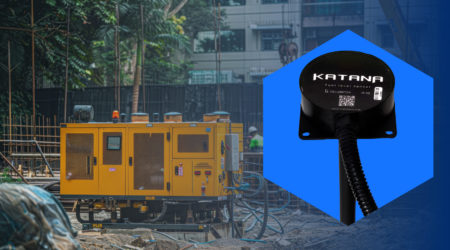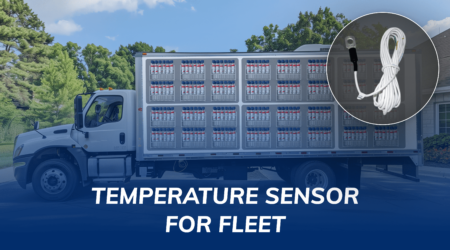What is Temperature Sensing Device? How it works?

In our daily lives, the concept of temperature plays a pivotal role in ensuring the quality, safety, and efficiency of various operations. This is where temperature sensing devices come into the picture. Designed to measure and monitor temperature accurately, these devices are critical in a wide range of applications, from simple household appliances to complex industrial systems. Among their many uses, they are especially crucial in fleet management and cold storage management. This is where precise temperature control can mean the difference between preservation and spoilage, safety and risk.
In this blog, we’ll delve into the world of temperature sensing devices, exploring how they work, their various applications. We will see particularly in fleet and cold storage management, and the latest trends shaping the future of temperature monitoring technology. With a focus on short, simple sentences and clear, informative sub-headings, our journey will be both enlightening and easy to follow.
Let’s embark on this fascinating exploration of temperature sensing devices, understanding their mechanisms, applications, and the innovations driving their evolution.
Understanding Temperature Sensing Devices
In the quest to monitor and manage temperature efficiently, a variety of temperature sensing devices have been developed. These devices play a crucial role in a wide range of applications. From industrial processing to home automation, and even in critical sectors like healthcare, fleet management, and cold storage. But before diving into the specifics of how these devices work, it’s essential to understand what they are and the basic principles behind their operation.
Definition and Basic Principles
At its most basic, a temperature sensing device is an instrument that measures the temperature of a specific object or environment and converts this data into a form that can be understood and acted upon by a user or system. The fundamental principle behind these devices is the measurement of a physical property that changes in a predictable manner with temperature. This property can be electrical resistance, emitted infrared radiation, or even the voltage across two different metals.
Types of Temperature Sensors
There are several types of temperature sensors, each with its own set of advantages, limitations, and areas of application:
Thermocouples:
They measure temperature based on the voltage created at the junction of the two metals when there is a temperature difference between that point and the other ends.
Resistance Temperature Detectors (RTDs):
Use metals that change their electrical resistance with temperature. Typically made of platinum, RTDs are known for their accuracy and stability over a wide temperature range.
Thermistors:
Similar to RTDs, thermistors change their resistance with temperature. They are made from ceramic or polymer materials. It offers a more significant resistance change for a given temperature change. It can provide higher sensitivity over a narrower range.
Infrared Sensors:
Measures the thermal radiation (infrared energy) emitted by an object. It allows for non-contact temperature measurement. This is ideal for moving objects or in situations where a physical touch sensor cannot be used.
Key Properties of Temperature Sensors
When selecting a temperature sensor, several key properties need to be considered:
- Accuracy and Range: The precision of the sensor and its operational temperature range.
- Sensitivity: The smallest change in temperature that the sensor can detect.
- Stability: The sensor’s ability to provide consistent readings over time.
Understanding these basic concepts and sensor types is foundational to grasping how temperature sensing devices are applied across various industries. It includes fleet and cold storage management. With this foundation in place, we can delve deeper into how these devices work and their practical applications.
How Temperature Sensing Devices Work
Each type of temperature sensor, from thermocouples to infrared sensors, operates on distinct principles that suit various applications. Understanding these mechanisms is key to leveraging the right technology for specific needs, especially in fields as critical as fleet management and cold storage.
Thermocouples: The Voltage-Based Sensors
Thermocouples exemplify simplicity and efficiency in temperature sensing. These devices consist of two dissimilar metals joined at one end, forming a junction. When this junction experiences a change in temperature, it generates a voltage difference between the two metals that is directly proportional to the temperature difference. This phenomenon, known as the Seebeck effect. It allows thermocouples to measure temperature changes rapidly. It makes them ideal for applications requiring quick response times, such as monitoring engine temperatures in fleet vehicles.
Resistance Temperature Detectors (RTDs): Precision Through Resistance
RTDs operate on the principle that the resistance of a metal conductor changes in a predictable manner with temperature changes. Typically made of platinum due to its stable and repeatable resistance-temperature relationship, RTDs offer high accuracy and stability over a wide temperature range. This makes them well-suited for applications where precision is paramount, such as in maintaining the strict temperature regulations required in pharmaceutical cold storage.
Thermistors: Sensitivity in the Details
Thermistors, or thermal resistors, provide high sensitivity to temperature changes through their significant resistance change for a given temperature shift. Made from ceramic or polymer materials, thermistors are available in two types: Negative Temperature Coefficient (NTC), where resistance decreases with an increase in temperature, and Positive Temperature Coefficient (PTC), where resistance increases with temperature. This high sensitivity makes thermistors perfect for applications needing precise temperature control and monitoring, such as in sensitive cold storage environments for perishable goods.
Infrared Sensors: The Non-contact Approach
Infrared sensors measure temperature without direct contact with the object being monitored, instead detecting the infrared radiation (heat) emitted by the object. This capability allows for the measurement of moving parts or objects that are inaccessible or hazardous to touch. It provides a critical advantage in fleet management where non-invasive and rapid temperature assessments can prevent overheating in critical components.
Applications in Industry
Understanding how these sensors work lays the foundation for appreciating their application in real-world scenarios. In fleet management, thermocouples and infrared sensors ensure vehicles operate within safe temperature ranges. It prevents breakdowns and ensures the longevity of temperature-sensitive cargo. Similarly, in cold storage management, the precision of RTDs and the sensitivity of thermistors play vital roles in maintaining product quality, safety, and compliance with regulatory standards.
This exploration into the workings of temperature sensing devices not only highlights the technological ingenuity behind them but also underscores their indispensable role across industries. As we move forward, the focus shifts to specific applications of these devices in fleet and cold storage management, showcasing the practical implications of these technologies in ensuring operational excellence and compliance.
Applications of Temperature Sensing Devices
The real-world applications of temperature sensing devices span across numerous sectors, demonstrating their versatility and critical importance. Particularly in fleet management and cold storage management, these devices play pivotal roles in ensuring operational efficiency, safety, and regulatory compliance. Let’s explore how temperature sensors are utilized in these industries to maintain the integrity of temperature-sensitive goods and ensure the smooth operation of vehicles and storage facilities.
Fleet Management: Ensuring Optimal Conditions on the Move
In the dynamic environment of fleet management, temperature sensing devices are indispensable for monitoring the condition of temperature-sensitive goods during transit. Thermocouples and infrared sensors are extensively used for their rapid response times and non-invasive measurement capabilities, respectively. These sensors help in:
Monitoring Engine and Cargo Temperatures:
Ensuring that the engine operates within a safe temperature range to prevent overheating and potential breakdowns. For refrigerated trucks, maintaining the cargo area’s temperature is crucial for the preservation of perishable goods.
Preventive Maintenance:
By continuously monitoring temperature data, fleet managers can predict and prevent potential issues before they lead to significant problems, thereby reducing downtime and maintenance costs.
Safety and Compliance:
Adhering to strict temperature regulations for the transport of certain goods, such as pharmaceuticals and food products, is non-negotiable. Temperature sensors ensure that these standards are consistently met throughout transit.
Cold Storage Management: Keeping Quality at the Core
Cold storage facilities rely on temperature sensing devices to maintain the quality and safety of stored goods, from food products to pharmaceuticals. RTDs and thermistors, known for their precision and sensitivity, are particularly suited for these applications. They facilitate:
Product Quality and Safety:
Ensuring products are stored at optimal temperatures to maintain freshness and prevent spoilage or damage. This is especially critical for products with strict temperature requirements.
Regulatory Compliance:
Many industries are subject to stringent regulations regarding the storage temperatures of certain goods. Temperature sensors enable facilities to comply with these regulations, avoiding fines and ensuring consumer safety.
Energy Efficiency:
By accurately monitoring and controlling the temperature within cold storage facilities, energy consumption can be optimized, leading to significant cost savings and environmental benefits.
The Critical Role of Technology
The integration of advanced technologies such as IoT (Internet of Things) further enhances the capabilities of temperature sensing devices. IoT-enabled sensors provide real-time data monitoring and analytics, enabling proactive management and decision-making. This technological evolution not only improves the reliability and efficiency of temperature monitoring but also paves the way for future innovations in fleet and cold storage management.
As we delve deeper into the significance of temperature sensing devices in these sectors, it becomes evident how indispensable they are for maintaining the highest standards of quality, safety, and efficiency. The next section of this blog will explore the latest trends in temperature sensing technology, highlighting how these advancements are shaping the future of temperature monitoring and management across industries.



